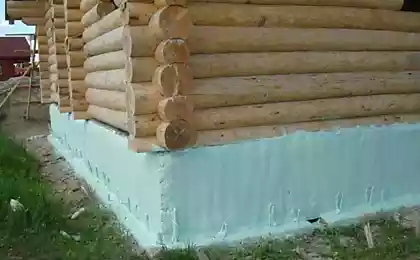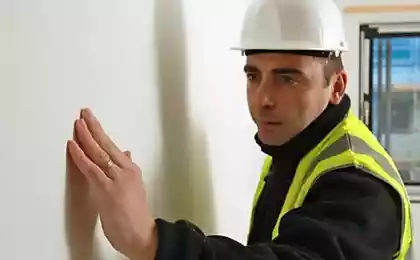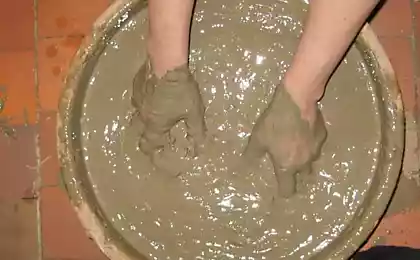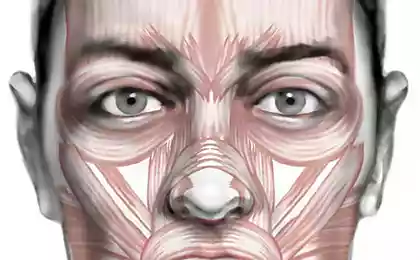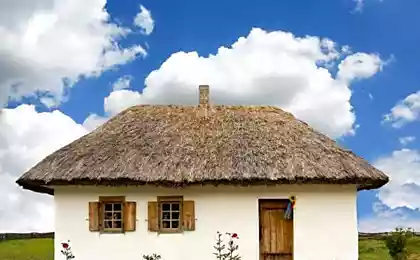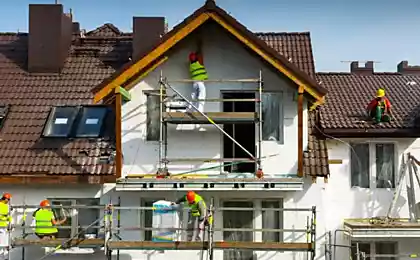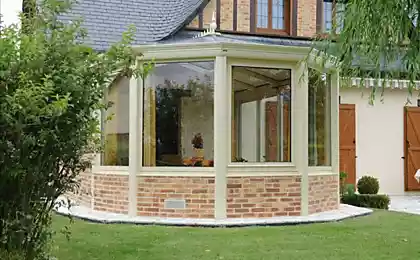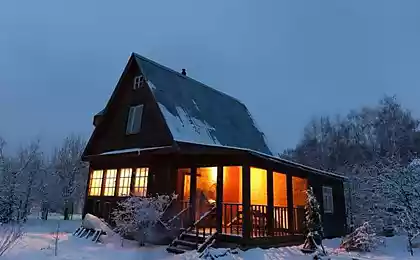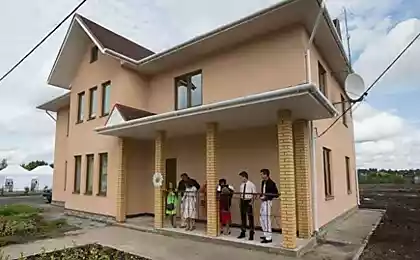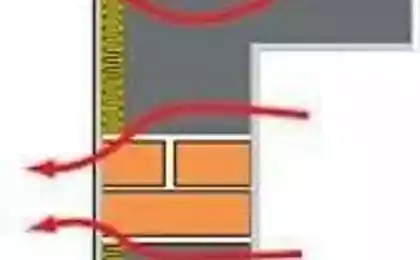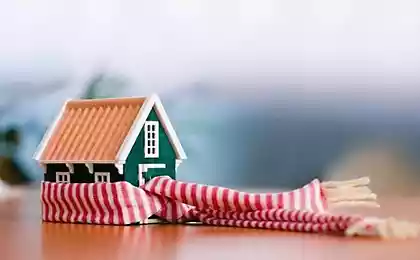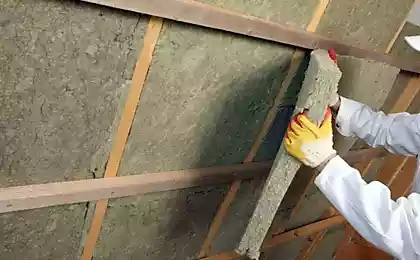544
Insulated walls, or warm plaster
In order to insulate a room, usually using two methods. You can create falshstenu inside the room, the space where to fill mineral insulation. Alternatively, you can impose the facade of the building with sheets of insulation.
It is not always possible to apply these technologies; in such cases, it is optimal to use warm plaster, which does not take away the useful area of the premises, but at the same time perfectly insulates the home.
The warm plaster is a mixture of clay and cement, with the addition of sawdust and paper pulp. Predominate in this mass of sawdust and paper.
In the composition of the warm plaster is valid with some variations. As a member, you can use plaster or cement. If you use plaster, the composition is only suitable for interior work because gypsum is very hygroscopic. If the composition of the mixture is cement, it is suitable for external and internal finishes.
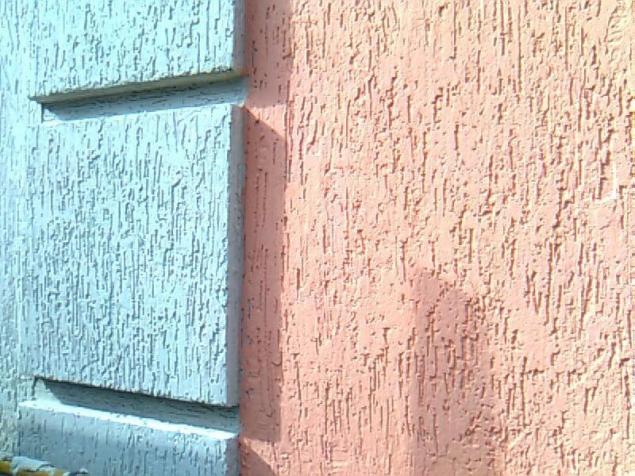
The warm plaster is vapour — permeable material, easily absorbing air from the ambient moisture. It comes in the form of powder and sheets of drywall. With the leaves much easier to work with because you can stick on the wall and mount to pre-assembled frame.
Basically, warm the plaster in the form of a mixture can be made independently. To do this, take one part clay, two parts paper pulp, three parts sawdust, and 0.2 part of the cement. Without cement you can do — he gives the part strength, but the plaster can remain on the surface of the walls. Additional strength to the plaster will give it a layer of filler applied over it.
Insulated plaster have many advantages compared to other methods of insulating walls. We can say that this technology combines the properties of all known materials that are intended for insulation of walls!
First worth noting its high thermal and sound insulation qualities, which to a large extent inherent in the foam. In addition, the plaster has antiseptic properties — clay does not allow to start it no bugs, no fungus, no mold, is environmentally friendly material. Rodents also can't damage a stucco.
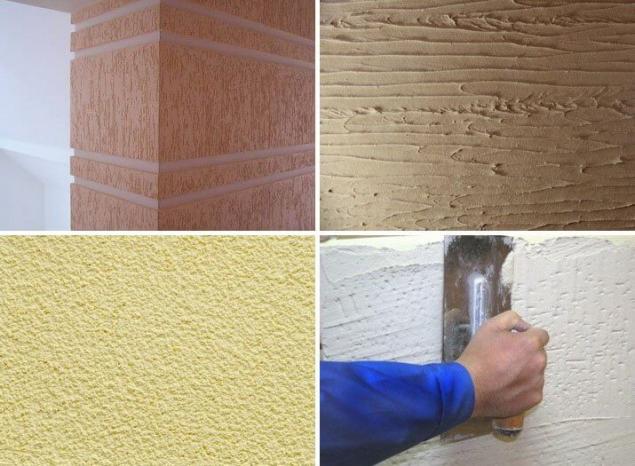
It should also be noted the low cost of a warm plaster: and the cost of this material is low, and the technology application provides for a significant cost. It's safe to say that the warm plaster is made from waste products.Everything else she is also a fire, despite the fact that the materials are paper and wood. This property of the material was acquired through the presence in the composition of the clay.
Warm plaster, thanks to these positive characteristics, makes it possible to simultaneously align the wall and give them the ability to retain heat. At the moment insulation of walls with plaster is a versatile, advanced, environmentally friendly and the most commonly used technology in modern construction. Warm plaster can be used indoors and outside.
Of the disadvantages of the warm plaster is possible to note only two: first, the insulation of this material is fairly labor-intensive process. In this respect, the warm plaster is almost indistinguishable from its "sister" — sand-cement plaster the process of their application are completely identical.
Second, assuming that you apply a warm plaster is not inside and outside, you will have a need for additional protection of the walls from the water. But this problem is solved by means of a special impregnation.
In General, many experts agree that the pros still outweigh the cons and apply a warm plaster for finishing work. published
P. S. And remember, only by changing their consumption — together we change the world! ©
Source: estp-blog.ru/rubrics/rid-43811/
It is not always possible to apply these technologies; in such cases, it is optimal to use warm plaster, which does not take away the useful area of the premises, but at the same time perfectly insulates the home.
The warm plaster is a mixture of clay and cement, with the addition of sawdust and paper pulp. Predominate in this mass of sawdust and paper.
In the composition of the warm plaster is valid with some variations. As a member, you can use plaster or cement. If you use plaster, the composition is only suitable for interior work because gypsum is very hygroscopic. If the composition of the mixture is cement, it is suitable for external and internal finishes.

The warm plaster is vapour — permeable material, easily absorbing air from the ambient moisture. It comes in the form of powder and sheets of drywall. With the leaves much easier to work with because you can stick on the wall and mount to pre-assembled frame.
Basically, warm the plaster in the form of a mixture can be made independently. To do this, take one part clay, two parts paper pulp, three parts sawdust, and 0.2 part of the cement. Without cement you can do — he gives the part strength, but the plaster can remain on the surface of the walls. Additional strength to the plaster will give it a layer of filler applied over it.
Insulated plaster have many advantages compared to other methods of insulating walls. We can say that this technology combines the properties of all known materials that are intended for insulation of walls!
First worth noting its high thermal and sound insulation qualities, which to a large extent inherent in the foam. In addition, the plaster has antiseptic properties — clay does not allow to start it no bugs, no fungus, no mold, is environmentally friendly material. Rodents also can't damage a stucco.

It should also be noted the low cost of a warm plaster: and the cost of this material is low, and the technology application provides for a significant cost. It's safe to say that the warm plaster is made from waste products.Everything else she is also a fire, despite the fact that the materials are paper and wood. This property of the material was acquired through the presence in the composition of the clay.
Warm plaster, thanks to these positive characteristics, makes it possible to simultaneously align the wall and give them the ability to retain heat. At the moment insulation of walls with plaster is a versatile, advanced, environmentally friendly and the most commonly used technology in modern construction. Warm plaster can be used indoors and outside.
Of the disadvantages of the warm plaster is possible to note only two: first, the insulation of this material is fairly labor-intensive process. In this respect, the warm plaster is almost indistinguishable from its "sister" — sand-cement plaster the process of their application are completely identical.
Second, assuming that you apply a warm plaster is not inside and outside, you will have a need for additional protection of the walls from the water. But this problem is solved by means of a special impregnation.
In General, many experts agree that the pros still outweigh the cons and apply a warm plaster for finishing work. published
P. S. And remember, only by changing their consumption — together we change the world! ©
Source: estp-blog.ru/rubrics/rid-43811/


